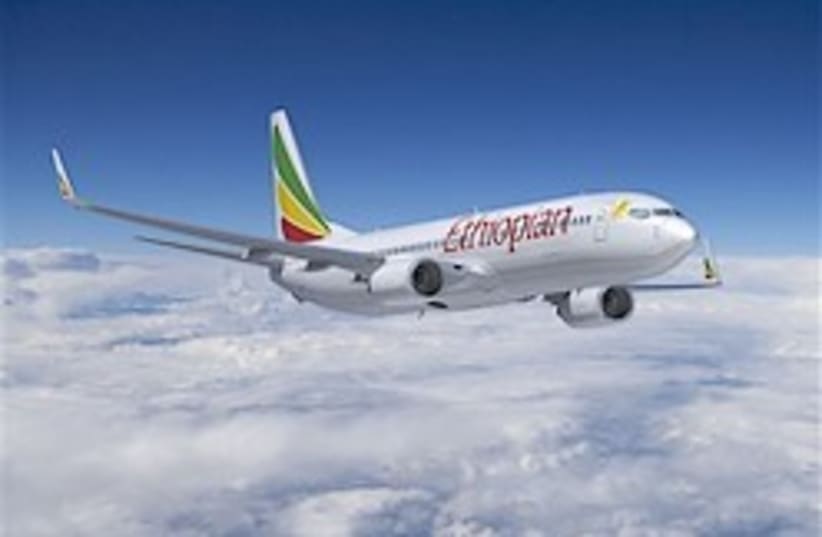An Ethiopian Airlinesplane carrying 90 people caught fire and crashed into the sea minutesafter taking off from Beirut early Monday, setting off a frantic searchas passenger seats, baby sandals and other debris washed ashore. Atleast 34 bodies were recovered.
The cause of the crash was not immediately known. Lebanonhas seen stormy weather since Sunday night, with crackling thunder,lightning and rain. The plane went down in darkness and crashed intowater that reached just 64 Fahrenheit (18 degrees Celsius) by afternoon.
LebanesePresident Michel Suleiman said terrorism was not suspected in the crashof Flight 409, which was headed for the Ethiopian capital, Addis Ababa.
"Sabotage is ruled out as of now," he said.
Weepingrelatives streamed into Beirut's airport to wait for news on theirloved ones. One woman dropped to her knees in tears; another cried out,"Where is my son?"
Andree Qusayfi said his 35-year-old brother,Ziadh, was traveling to Ethiopia for his job at a computer company, butwas planning to return to Lebanon for good soon.
"Webegged him to postpone his flight because of the storm," Qusayfi said,his eyes red from crying. "But he insisted on going because he had workappointments."
Zeinab Seklawi said her 24-year-old son Yasser called her as he was boarding.
"Itold him, 'God be with you,' and I went to sleep," Seklawi said."Please find my son. I know he's alive and wouldn't leave me."
Thedead include several children, according to a Lebanese defense officialwho asked that his name not be used because he is not authorized tospeak to publicly.
The Boeing 737-800 took off around 2:30 a.m.(7:30 p.m. EST) and went down 2 miles (3.5 kilometers) off the coast,said Ghazi Aridi, the public works and transportation minister. TheLebanese army said in a statement the plane was on fire shortly aftertakeoff.
"The weather undoubtedly was very bad," Aridi told reporters at the airport.
Piecesof the plane and debris were washing ashore in the hours after thecrash, including passenger seats, a baby sandal, a fire extinguisherand bottles of medicine.
The wife of Denis Pietton, the French ambassador to Lebanon, was on the plane, according to the French embassy.
Helicoptersand naval ships were scrambled for a rescue effort as huge wavesslammed into the shore. Lebanese Prime Minister Saad Hariri announced aday of mourning and closed schools and government offices.
Astatement from the defense ministry in Cyprus, which sentreinforcements to help in the search, said 34 bodies have beenrecovered so far.
Ethiopian Airlines' CEO Girma Wake toldjournalists in Addis Ababa that he had no information on the fate ofthose on board or about the cause of the crash. He said the aircrafthad been serviced on Dec. 25 and passed inspection.
He also saidthe plane had been leased in September from CIT Aerospace. Calls to CITAerospace were not immediately returned Monday.
The plane wascarrying 90 people, including 83 passengers and 7 crew, Lebaneseofficials said. Aridi, the transportation minister, identified thepassengers as 54 Lebanese, 22 Ethiopians, one Iraqi, one Syrian, oneCanadian of Lebanese origin, one Russian of Lebanese origin, a Frenchwoman and two Britons of Lebanese origin.
Ethiopian Airlines reported that there were 82 passengers and eight crew; the discrepancy could not immediately be explained.
TheBoeing 737 is considered one of the safest planes in airline service.The jet was first introduced in the 1960s, and today is the workhorseon many short- and medium-range routes.
Still, over the past 15years it was involved in a series of incidents and crashes linked to avalve in the rudder assembly. This reportedly would malfunction andcause the rudder to turn independently of the pilot's commands.
Theproblem was considered resolved after operators of older Boeing 737swere ordered to carry out inspections and upgrades of the criticalrudder control systems.
Sidney Dekker, a professor of flightsafety at the School of Aviation at Lund University in Sweden, said therudder problem has been corrected by the manufacturer and that he'd be"hugely surprised" if it had anything to do with the crash.
Dekker,himself a 737 pilot, said that if reports of an engine fire proved tobe correct, the accident could have possibly resulted from a loss ofcontrol at relatively low altitude.
He noted that the 737'sengines were overpowered in order to fulfill single-engine takeoffperformance requirements. "This tends to produce a turning movementtoward the dead engine in the case of the loss of a powerplant attakeoff," he said.
Poor visibility in low cloud combined with high winds may have contributed to the problem faced by the pilots, he said.
InFebruary 2009, a Turkish Airlines Boeing 737-800 plane crashed short ofthe runway at Amsterdam's Schiphol Airport, killing nine passengers andcrew. Dutch investigators say the plane crashed because of a falsereading from a faulty altimeter.
The state-owned EthiopianAirlines announced last week that it signed an agreement with Boeing tobuy 10 more of the 737-800s at an estimated $767 million. The orderwill expand the airline's fleet from the 36 aircraft it has now — notincluding the 737-800 that crashed Monday.
Aviation safetyanalyst Chris Yates said it was far too early to say what caused thecrash, but he noted that modern aircraft are built to withstand all butthe foulest weather conditions.
"One wouldn't have thought that anasty squall in and of itself would be the prime cause of an accidentlike this," said Yates, an analyst based in Manchester, England. Henoted that reports of fire could suggest "some cataclysmic failure ofone of the engines" or that something had been sucked into the engine,such as a bird or debris.
Ethiopian Airlines has long had areputation for high-quality service compared to other African airlines,with two notable crashes in more than 20 years.
A hijackedEthiopian Airlines jet crash-landed off the Comoros Islands in theIndian Ocean when it ran out of fuel in November 1996, killing 126 ofthe 175 people aboard. In September 1988, an Ethiopian Airlines jetcrashed shortly after taking off when it ran into a flock of birds,killing 31 of the 104 people on board.
Boeing said it iscoordinating with the US National Transportation Safety Board toassist Lebanese authorities in the investigation.
